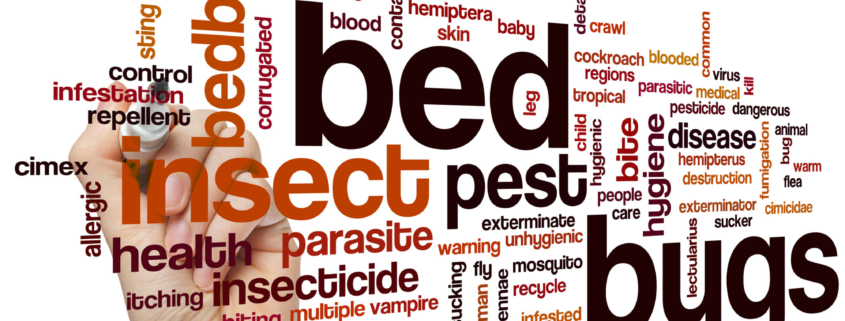5 Early Warning Signs for Spotting Bed Bugs
While bed bugs are generally not dangerous, they’re considered a public health pest. Bed bugs don’t carry diseases, but they can still cause negative effects on your health.
Bed bugs are common pests that feed on human blood and hide in household furniture. Some people can have an allergic reaction to bites from bed bugs. Secondary skin infections may also develop from the bite like impetigo or ecthyma.
The mental health of people living in infested homes can also suffer. Anxiety and insomnia are some of the reported effects.
Spotting the early signs of bed bugs can save you from the worse trouble of an infestation. Read on to know about bed bugs and their five early warning signs.
Identifying Bed Bugs
Bed bugs can resemble other insects. Knowing how to identify bed bugs helps distinguish them from other critters. It allows you to save time, money, and prevent more stress.
Adult bed bugs have a light or reddish-brown color. Depending on the lighting, they can also appear black. They can be hard to see since they move fast.
Bed bugs are small and have flat, oval-shaped bodies. They’re about 4 to 5 mm in diameter.
They have six legs and two antennae. Their segmented bodies have tiny hairs that give them a striped look.
Younger bed bugs or nymphs are translucent and can look white or light brown. After feeding, they turn bright red. It fades to brown before finally becoming black.
Bed bugs feed on blood and they change color as they digest it. If they didn’t feed, they look flat. Otherwise, their backs rise in response to sustenance.
Like all other insects, bed bugs have an exoskeleton as a hard shell. It means they molt, shedding their exoskeletons as they grow.
Fiver Early Signs of Bed Bugs
Now you know what bed bugs look like, it’s time to learn the early signs of their presence. Most don’t realize they have a bed bug infestation until they see the actual bed bugs. Spotting them early is better than getting rid of well-nested bed bugs.
1. Shells and Eggs
Since bed bugs shed their exoskeletons as they grow, they leave their old shells behind. You might find these casings around your bed. Finding bed bug skin is a sure sign that there are bed bugs in your house.
You might also notice bed bug eggs. They’re white and usually come in clusters.
Bed bug eggs are smaller than the actual insect, meaning you’ll likely fail to notice them without further inspection. However, if you find eggs and bed bug casings, it’s a clear sign of an infestation.
2. Itchiness from their Bites
One of the other sure and early signs of bed bugs is on your skin. When bed bugs bite, you’ll feel some itchiness. Fortunately, bed bug bites don’t carry diseases. However, they’re irritating and inconvenient.
Your exposed body areas are vulnerable to bed bug bites. These will often be your arms, neck, or head. Bed bug bites usually look like small, raised, red spots on the skin.
They might also show up a day or two after the bite. It can also form distinct patterns on your skin, often manifesting as a line. It helps distinguish them from flea or mosquito bites.
Your skin’s reaction also depends on the bed bug’s type. Some cause an extreme reaction while others won’t. It’s also possible to start feeling the bite’s itch a week later.
3. Bloodstains on Your Sheets
There are three reasons why humans attract bed bugs. Our body heat, carbon dioxide from our exhalations, and blood. Since blood is their primary food source, they stuff themselves whenever they feed.
As such, one telltale sign of bed bugs is seeing small red stains on your sheets or pajamas after waking.
Two things can cause these bloodstains. You might roll onto the bed bugs in your sleep and crush them in the process. Otherwise, it’s a residue of their feeding frenzy.
If you wake with these stains on your bed, consider calling for pest control. If you don’t, you’ll suffer from continued harassment from these vermin.
4. Dark, Rust-Colored Spots on Your Mattress or Walls
If you often find dark, rust-colored stains on your mattress, these are likely bed bug excrement. Test if the brown specks are either bed bug droppings or old ink stains. Smear it with water since ink stains won’t spread.
Your mattress isn’t the only place where you might find bed bug droppings. They can also leave stains on walls or under wallpapers. Inspect these places to ensure they’re free from these specks.
Bed bugs usually leave fecal stains as soon as they reach sufficient numbers. Try examining your bed or nearby walls for suspicious stains. If you find them, don’t waste time and call for pest control.
5. A Musty Odor
Another sign of bed bug presence is an unexplained damp and musty odor in your home. You might notice the smell only around your bed area. However, you might also come from other nearby pieces of furniture.
Some people say that the odor is comparable to moldy clothing or a wet dog. It comes from the pheromones they release. Note that in general, the stronger the smell, the larger the infestation likely is.
Prevent a Bed Bug Infestation Now
Bed bugs may not be dangerous, but they’re stressful to live with. Bed bugs feed on our blood, reducing the quality of our sleep. Identifying the early signs of bed bugs can help prevent an infestation.
Observe if there are any casings or eggs in your bed. Dark spots on your mattress and walls as well as a musty odor are suspicious signs. If you wake up with itchy bite marks, consider calling a professional.
Looking for pest control services? Contact us today and we can help you prevent a worse bed bug infestation in your home.



